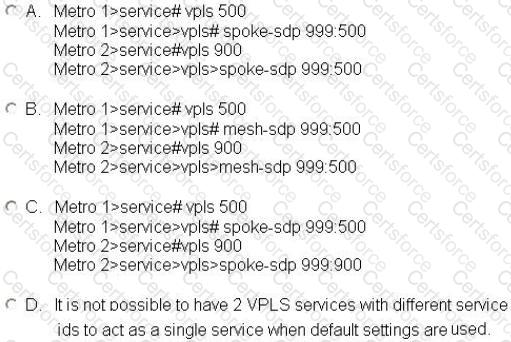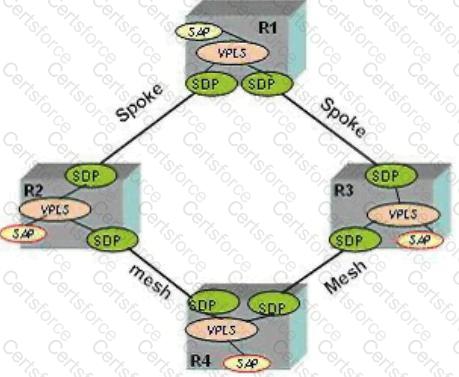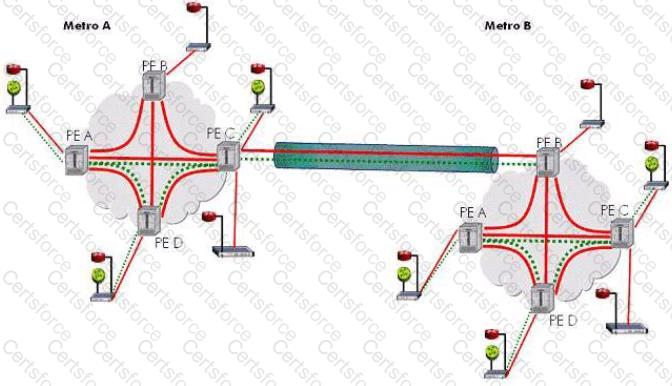Which of the following are possible criteria for classifying packets at the SAP-ingress? (Choose three)
For what does a Layer 2 switch use the SA in the Ethernet frame?
Which of the following statements are TRUE? (Choose two)
What is the default remote-age timer of a B-VPLS?
You are providing a customer two VPLS services in two different Metro networks. VPLS 500 has been configured in Metro 1 and VPLS 900 has been configured in Metro 2. The customer has requested that they have connectivity between the Metro Networks with their existing VPLS services. Which configuration on the PE routers linking the metro networks will allow for VPLS 500 and VPLS 900 to act as a single VPLS service? Assume default values for all VPLS parameters and SDP 999 exists between the metro networks.

To reduce the amount of flooding between PE devices which of the following steps should be taken?
Which of the following functions must a PE router support when participating in a VPLS service? (Choose 3)
The service-mtu of a VPLS using MPLS encapsulation is set to 9100. What is the minimum MTU value that can be set for the network port if fast re-route facility mode is used on the SDP LSP?
Which of the following statements is false?
Click on the exhibit below.

The VPLS service MTU on R2 is 1514 bytes. What must the service MTU be on all other routers participating in the VPLS?
Click on the exhibit below.

If the device connected to PE-A in Metro A sends a frame to PE-A that requires replication within the VPLS which devices is PE-A responsible for replicating the frame to?
Which of the following technologies allows for two explicit VLAN tags to be received from a customer device?
RSTP blocks a spoke-sdp using a management VPLS. Is traffic affected on an ES using the same transport SDP?
If the max remote-age timer of a B-VPLS is reached, what happens to the remotely learned MAC addresses in the l-VPLS service?
Redundant spoke-SDPs are used between 2 Metro networks for redundancy. How can load balancing be achieved across the redundant spoke-SDPs?